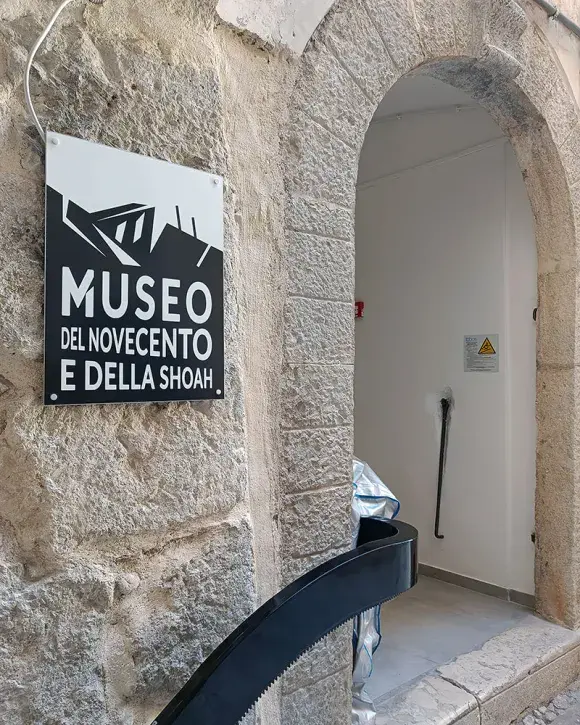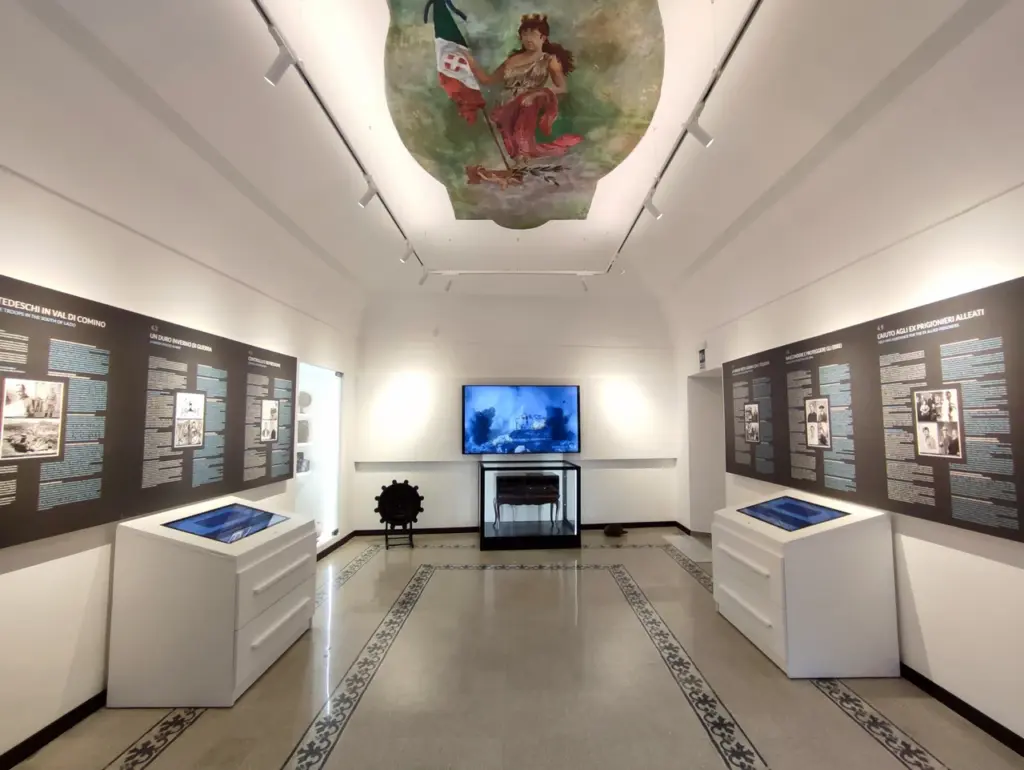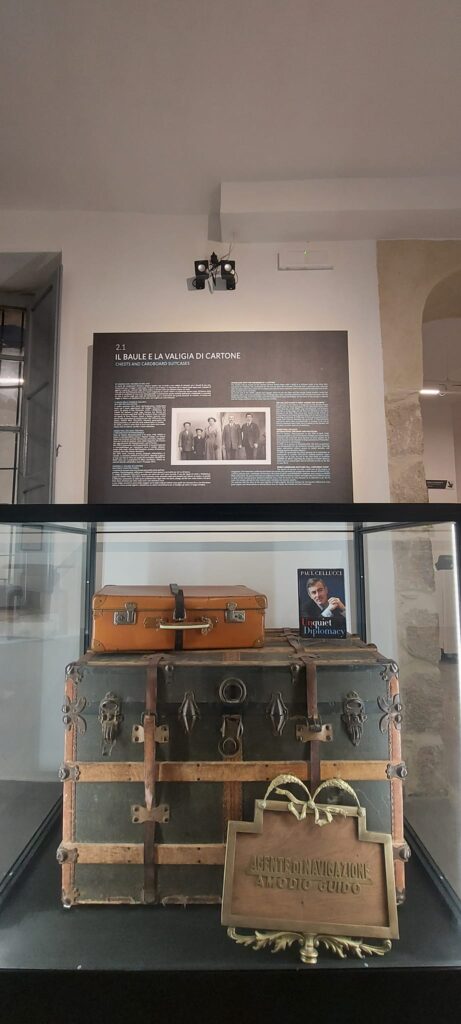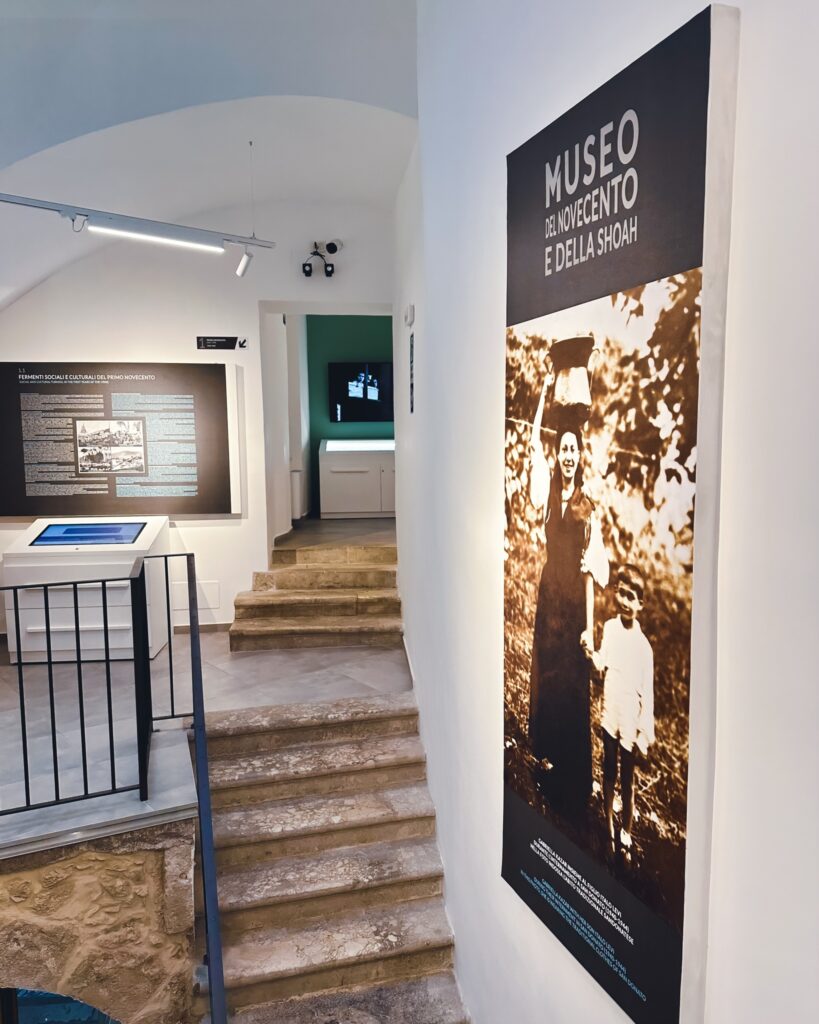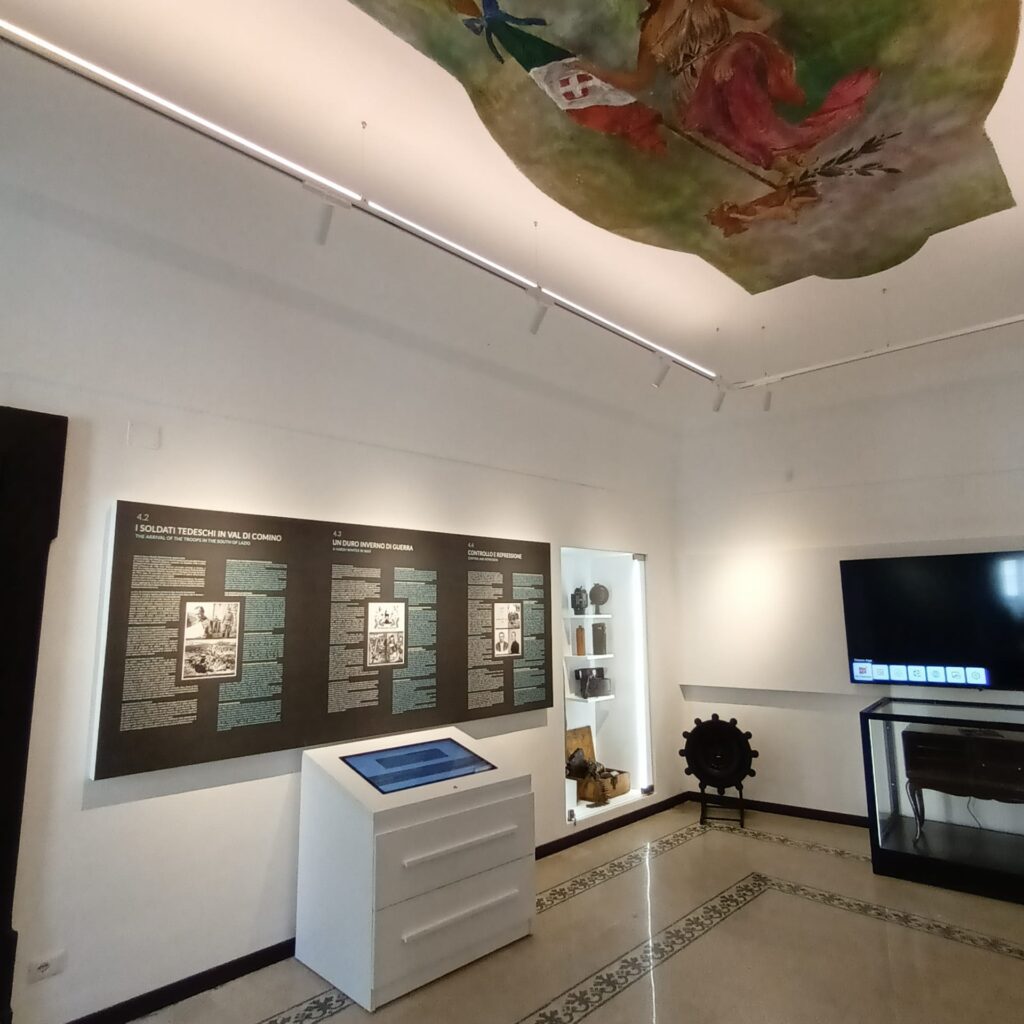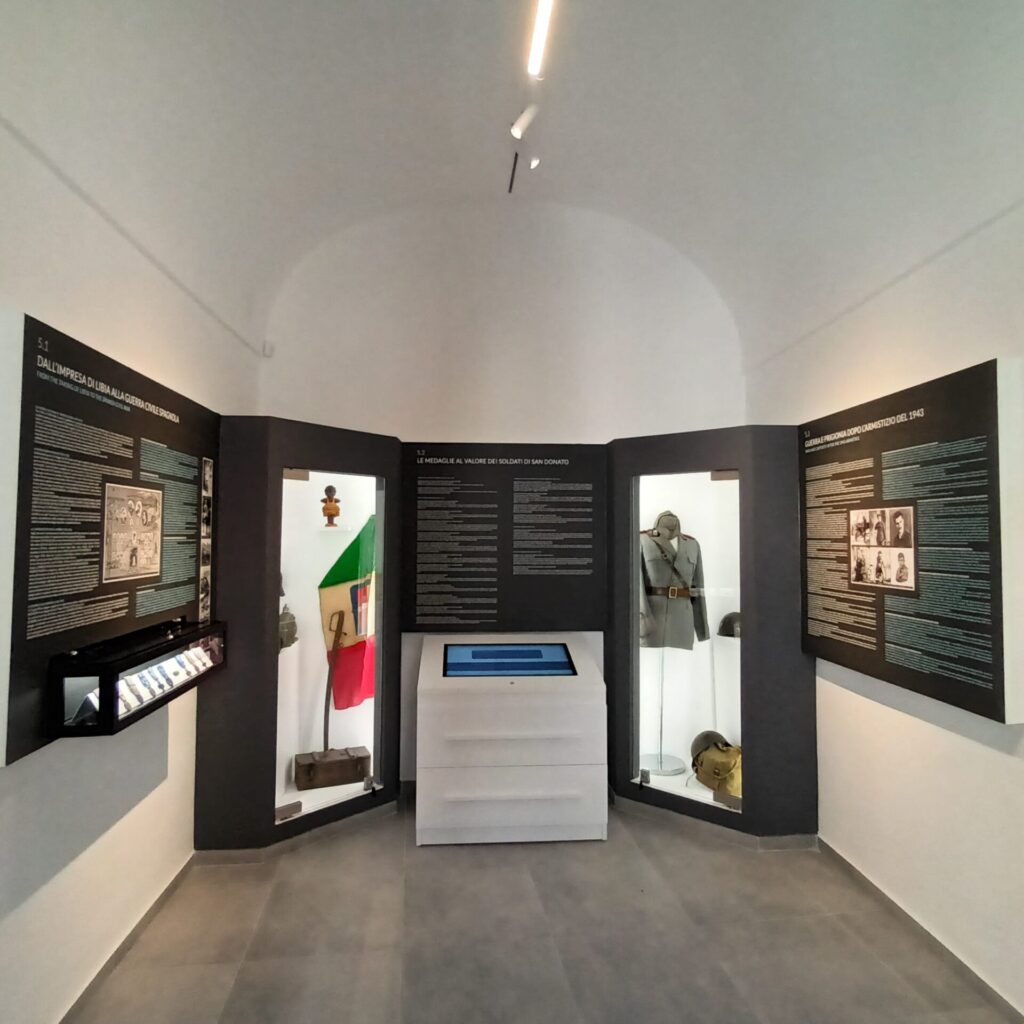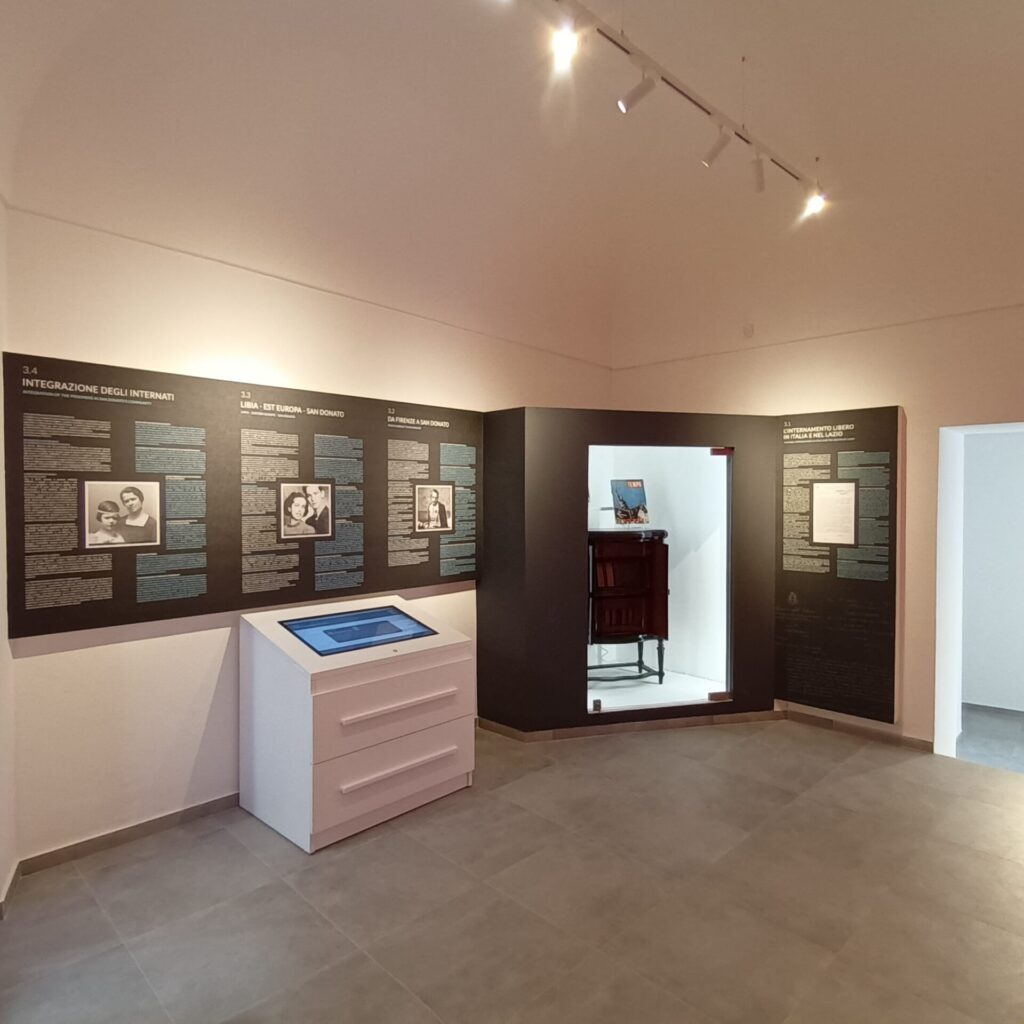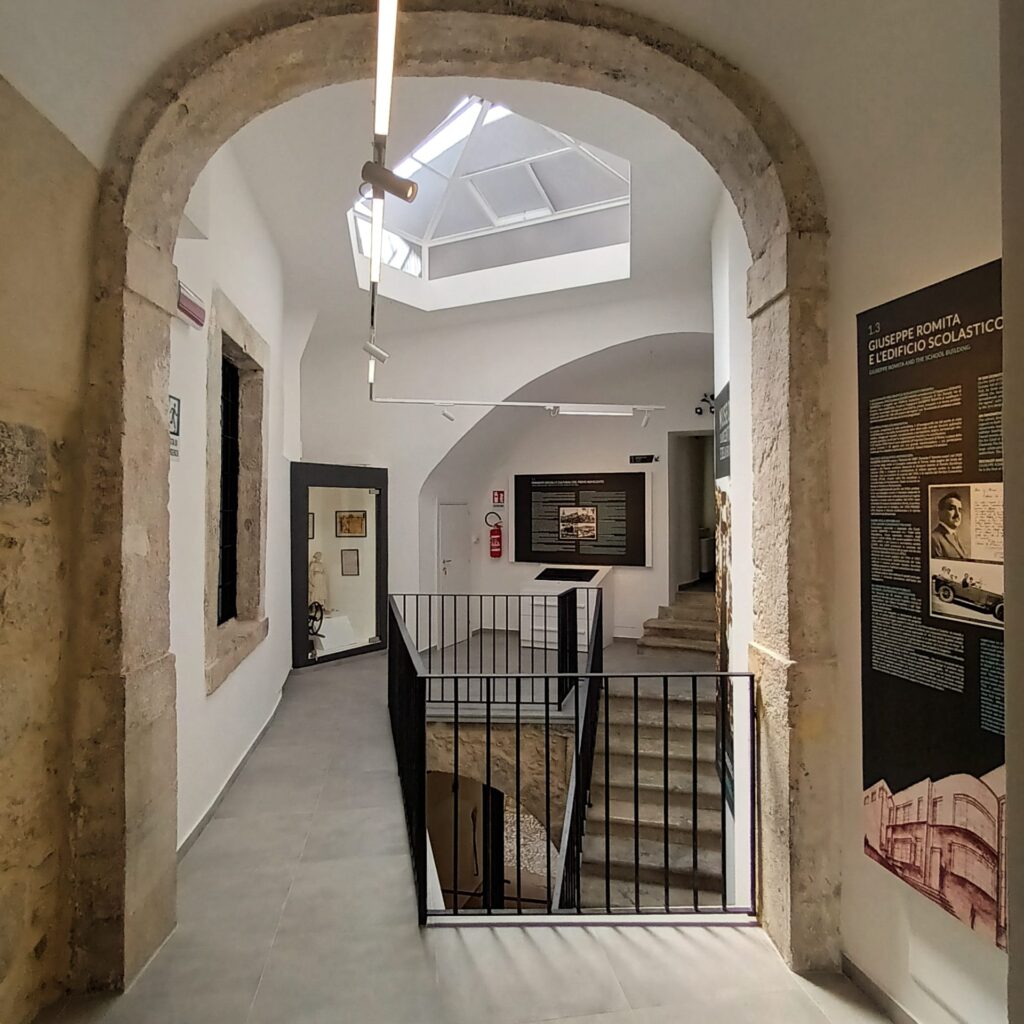Museum of the 20th Century and the Shoah
Museum
The Museum makes visitors experience World War II and the Holocaust during the Battle of Cassino. Eight rooms, through an evocative interactive and immersive itinerary, tell the story of: the early 20th century, fascism, emigration, internment of foreign Jews, the stages to Auschwitz, aid to former Allied prisoners, the referendum for the Republic, and the reconstruction of Montecassino.
The museum, inaugurated June 18, 2022 by Mayor Enrico Pittiglio, is the brainchild of Luca Leone's 2019 project idea, developed in collaboration with the Holocaust Museum in Washington, DC. The room displays are organized chronologically, punctuated by looping films. Visitors can virtually browse through documents, war diaries, and unpublished writings with touch screens. Display cases and chests of drawers display objects from the daily lives of Jews, emigrants, German, Italian and Allied soldiers.
The projected images and exhibits were chosen not to traumatize younger visitors and sensitive people. An elevator and a stair elevator make the facility accessible to the disabled. Organized activities include guided tours, workshops, educational tours, teacher training, studies, research, urban trekking, excursions to World War II sites, events, and Remembrance Day events.
San Donato Val di Comino was one of the most important free internment locations in Italy and the first in Lazio. The first Jewish internees arrived in the summer of 1940, establishing good relations with the population and the authorities, from whom they received welcome, help and were immediately integrated. Among the internees were: Margaret Bloch, Kafka's friend and confidante; Grete Berger, an important actress of silent film and German Expressionism, who starred in some of the masterpieces of film history: The Student of Prague, Metropolis, Dr. Mabuse, Destiny.
With the fall of fascism and the German militarization of the Comino Valley, San Donato became the rear of the Cassino front and the last inhabited village before the Gustav Line. The town suffered various aerial bombardments and shelling, Allied and German, from November 5, 1943 to June 5, 1944, the last day of the war in Cassino. During those months the inhabitants, particularly the women, rescued and helped Jewish internees, Yugoslav internees and about a thousand Allied prisoners who had escaped from prisons in Abruzzo and Emilia Romagna, receiving certificates of thanks signed by General Alexander.
Organized activities include guided tours, workshops, educational tours, teacher training, studies, research, urban trekking, excursions to World War II sites, events, and Remembrance Day events.
The museum, inaugurated June 18, 2022 by Mayor Enrico Pittiglio, is the brainchild of Luca Leone's 2019 project idea, developed in collaboration with the Holocaust Museum in Washington, DC. The room displays are organized chronologically, punctuated by looping films. Visitors can virtually browse through documents, war diaries, and unpublished writings with touch screens. Display cases and chests of drawers display objects from the daily lives of Jews, emigrants, German, Italian and Allied soldiers.
The projected images and exhibits were chosen not to traumatize younger visitors and sensitive people. An elevator and a stair elevator make the facility accessible to the disabled. Organized activities include guided tours, workshops, educational tours, teacher training, studies, research, urban trekking, excursions to World War II sites, events, and Remembrance Day events.
San Donato Val di Comino was one of the most important free internment locations in Italy and the first in Lazio. The first Jewish internees arrived in the summer of 1940, establishing good relations with the population and the authorities, from whom they received welcome, help and were immediately integrated. Among the internees were: Margaret Bloch, Kafka's friend and confidante; Grete Berger, an important actress of silent film and German Expressionism, who starred in some of the masterpieces of film history: The Student of Prague, Metropolis, Dr. Mabuse, Destiny.
With the fall of fascism and the German militarization of the Comino Valley, San Donato became the rear of the Cassino front and the last inhabited village before the Gustav Line. The town suffered various aerial bombardments and shelling, Allied and German, from November 5, 1943 to June 5, 1944, the last day of the war in Cassino. During those months the inhabitants, particularly the women, rescued and helped Jewish internees, Yugoslav internees and about a thousand Allied prisoners who had escaped from prisons in Abruzzo and Emilia Romagna, receiving certificates of thanks signed by General Alexander.
Organized activities include guided tours, workshops, educational tours, teacher training, studies, research, urban trekking, excursions to World War II sites, events, and Remembrance Day events.
Do you want to visit this attraction?
Book your vacation now.
Museum of the 20th Century and the Shoah,
Clock Street,
16,
03046 San Donato Val di Comino FR,
Italy
-
Via Orologio, 16, 03046 San Donato Val di Comino FR, Italy
Details
Suitable for
- Couples, Families, Groups, Solo travelers
Best season to go
- All the seasons
Duration / time of visit
- Up to 2 hours
Type of tour
- This attraction is part of a guided tour, Small groups tour, Solo tour, Private tour
Are audio guides provided?
- On request
Available languages
- French, English, Italian, Spanish, German
Ticket price
- For a fee and by appointment






